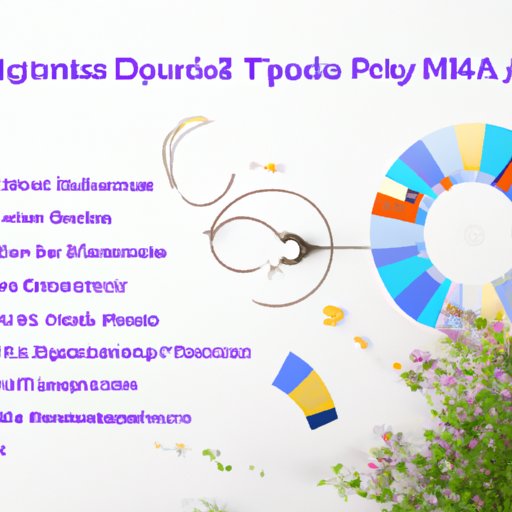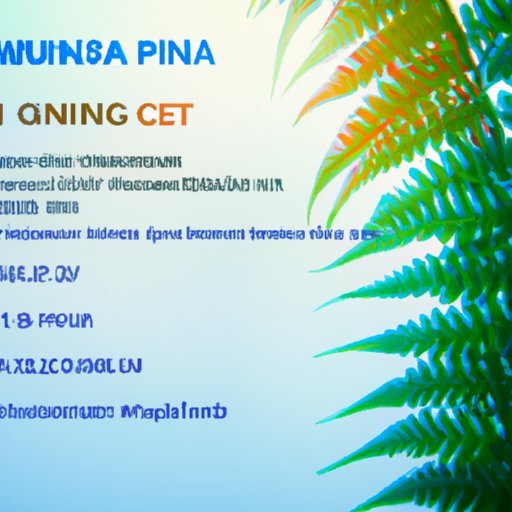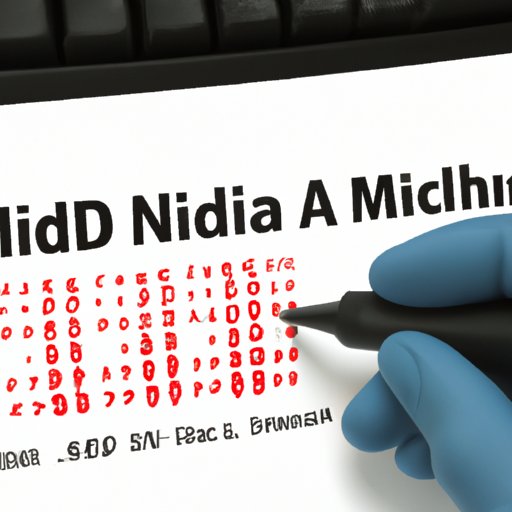Introduction
Mitochondrial DNA (mtDNA) typing is a form of DNA testing that has been used increasingly in forensic science. This type of testing is used to analyze samples of genetic material taken from a crime scene or other sources to identify suspects or victims, as well as to establish biological links between them. In this article, we will examine the role of mtDNA typing in forensic science and explore its various applications and advantages and disadvantages.

An Overview of mtDNA Typing and its Applications in Forensic Investigations
mtDNA typing is a type of DNA testing that uses the mitochondrial genome, which is located outside of the nucleus of a cell and contains 37 genes, to identify individuals. The mtDNA is passed down from mother to child and does not change significantly over time, making it useful for identifying individuals from samples taken from a crime scene or other sources. mtDNA typing can also be used to identify family members by comparing their mtDNA profiles.
mtDNA typing has become an important tool in forensic investigations. It has been used in a variety of cases, including murder investigations, missing person cases, and criminal identification. For example, in 2007, mtDNA typing was used to identify the remains of a woman who had been missing for 30 years in the United Kingdom. In another case, mtDNA typing was used to link a suspect to a rape that occurred more than 20 years earlier.
How mtDNA Typing is Used to Identify Suspects in Criminal Cases
mtDNA typing can be used to identify suspects in criminal cases by comparing the mtDNA profiles of suspects and victims. The process begins with the collection of mtDNA evidence from the crime scene. This evidence can include blood, semen, hair, skin cells, and other biological materials. The evidence is then analyzed using the polymerase chain reaction (PCR) method to obtain an mtDNA profile.
Once the mtDNA profile is obtained, it is compared to the mtDNA profiles of suspects and victims to determine if there is a match. If a match is found, then the suspect can be identified. The admissibility of mtDNA evidence in court depends on the accuracy of the analysis and the strength of the connection between the suspect and the evidence.

A Comprehensive Guide to mtDNA Testing for Forensic Identification
There are several types of mtDNA tests available for forensic identification. These include single nucleotide polymorphism (SNP) testing, short tandem repeat (STR) testing, and HV1/HV2 sequencing. Each of these tests has different levels of accuracy and can be used to identify individuals in different ways.
The process of mtDNA testing for forensic identification involves obtaining a sample of mtDNA from the crime scene or other source, analyzing the sample using PCR and other methods, and comparing the results to the mtDNA profiles of suspects and victims. The accuracy of the results depends on the quality of the sample and the accuracy of the analysis.
In order to ensure accurate results, mtDNA testing laboratories must be accredited by the American Society of Crime Laboratory Directors (ASCLD). Accreditation requires laboratories to meet certain standards for equipment, personnel, and procedures. Laboratories must also have policies and procedures in place to ensure that mtDNA test results are reliable and valid.

The Benefits of mtDNA Typing for Establishing a Biological Link in Crime Scenes
One of the major advantages of mtDNA typing is its accuracy. Because the mtDNA profile is inherited from the mother and does not change significantly over time, it is highly unlikely that two individuals will have the same mtDNA profile. This makes mtDNA typing a reliable tool for establishing a biological link between suspects and victims in criminal cases.
Another advantage of mtDNA typing is its usefulness in establishing links between suspects and victims. By comparing the mtDNA profiles of suspects and victims, investigators can determine whether the suspect was present at the scene of the crime or had contact with the victim. This can be invaluable in determining the identity of a suspect in a criminal case.
Examining the Advantages and Disadvantages of mtDNA Typing in Forensic Science
Although mtDNA typing has many advantages for forensic investigations, there are also some drawbacks to consider. One disadvantage is that mtDNA typing is relatively expensive, especially when compared to other forms of DNA testing such as STR testing. Additionally, mtDNA typing can only be used to identify individuals and cannot be used to establish family relationships.
Another disadvantage of mtDNA typing is that the results can take longer to obtain than other forms of DNA testing. This is because mtDNA testing requires the use of more sophisticated methods, such as PCR, and the analysis of the sample can take several weeks. Additionally, mtDNA testing is not as widely available as other forms of DNA testing, so it may not be available in all locations.
Conclusion
In conclusion, mtDNA typing is a valuable tool for forensic investigations. It can be used to identify suspects and victims, as well as to establish biological links between them. Although mtDNA typing is more expensive than other forms of DNA testing and the results can take longer to obtain, it is a reliable and accurate method for establishing a link between suspects and victims in criminal cases.
Overall, mtDNA typing is a powerful tool for forensic science and has many advantages over other forms of DNA testing. Its accuracy and usefulness in establishing links between suspects and victims make it an invaluable tool for criminal investigations.
(Note: Is this article not meeting your expectations? Do you have knowledge or insights to share? Unlock new opportunities and expand your reach by joining our authors team. Click Registration to join us and share your expertise with our readers.)
